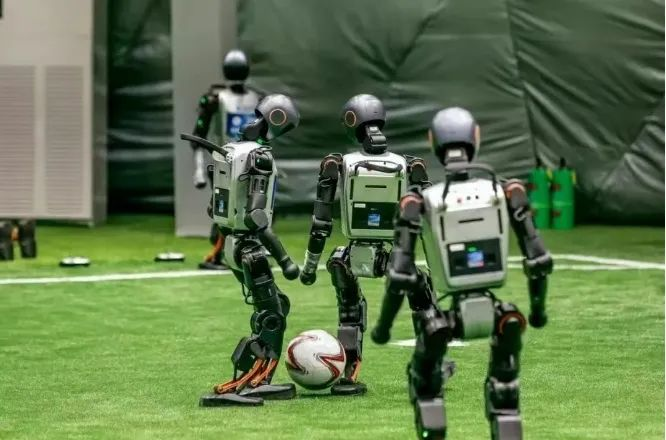China launched its ambitious World Humanoid Robot Games in Beijing, featuring an extensive program of 26 sports disciplines across three competitive days. This groundbreaking event represents the world’s first comprehensive sports competition designed specifically for humanoid robots, attracting global attention to China’s advancing robotics capabilities.
The competition structure spans from August 15-17, 2025, with ceremonies held at Beijing’s National Speed Skating Oval, demonstrating China’s commitment to positioning itself as a leader in artificial intelligence and robotics innovation.
Competition Categories: Traditional Sports Meet Cutting-Edge Technology
Athletic Performance Events
The games showcase robots attempting traditional human athletic competitions, pushing the boundaries of mechanical precision and artificial intelligence. Track and field events form a cornerstone of the competition, including 100-meter sprints, 400-meter races, and demanding 1,500-meter endurance challenges.
Field events test robots’ coordination and power through high jump competitions, while obstacle races on August 16 create complex navigation challenges that mirror real-world mobility requirements. The culminating 4×100-meter relay races demand sophisticated team coordination between multiple robot units.
Team Sports and Strategic Competition
Football emerges as a premier testing ground for robotic capabilities, featuring both 3v3 and 5v5 match formats that challenge perception, decision-making, and real-time coordination. Booster Robotics, whose humanoid units compete through Tsinghua University teams, views soccer as an essential proving ground for technologies destined for factory and home applications.
According to Zhao Mingguo, chief scientist at Booster Robotics, “Playing football is a testing and training ground for helping us refine our capabilities.” This perspective highlights how competitive sports translate directly into practical robotics advancement.
Table tennis competitions add precision-based challenges, requiring split-second reaction times and complex hand-eye coordination that pushes current robotic sensory systems to their limits.
Performance and Artistic Demonstrations
Beyond pure athletics, the games incorporate dance and martial arts performances that showcase collaborative control systems and group coordination capabilities. These events feature solo performances, group choreography, and martial arts demonstrations that highlight fluid movement and synchronized operation.
Gymnastics competitions test balance, flexibility, and precise motor control, representing some of the most technically demanding challenges for current humanoid robot technology.
Real-World Application Scenarios
Industrial and Medical Challenges
The competition extends beyond entertainment through scenario-based events designed to evaluate practical applications. Industrial material handling challenges simulate factory environments, testing robots’ ability to manipulate objects, navigate workspaces, and complete complex assembly tasks.
Pharmaceutical sorting scenarios recreate hospital and pharmacy environments, challenging robots to accurately identify, categorize, and handle medical supplies with precision crucial for healthcare applications.
Service Industry Simulations
Hospitality sector challenges evaluate robots’ potential in customer service environments, testing their ability to interact appropriately, provide assistance, and navigate social situations that require emotional intelligence and cultural awareness.
Cleaning service demonstrations showcase robots tackling real-world maintenance tasks, highlighting their potential for domestic and commercial applications in China’s aging society.
Freestyle Combat and Entertainment
Combat sports and slam dunk competitions represent the games’ most spectacle-driven events, demonstrating advanced motor skills, balance, and dynamic movement capabilities that captivate audiences while testing technological limits.
Global Participation and Competition Structure
International Team Representation
The competition attracts 280 teams from 16 countries, featuring over 500 individual robots across 538 sub-events within the 26 main categories. International participation includes teams from the United States, Germany, and Brazil, creating a truly global robotics showcase.
Academic and Commercial Balance
Participation splits between 192 university-based teams and 88 private enterprise competitors, reflecting the balance between academic research and commercial robotics development. This structure encourages both theoretical advancement and practical application development.
Chinese companies including Unitree and Fourier contribute competing robots, demonstrating domestic robotics capabilities alongside international innovations.
Strategic Context and Economic Impact
Government Investment and Policy Support
The Beijing municipal government serves among the organizing bodies, reflecting China’s strategic emphasis on robotics as a key economic sector. This support aligns with broader national AI and automation ambitions amid demographic challenges from an aging population and economic growth concerns.
Government subsidies exceeding $20 billion over the past year demonstrate unprecedented financial commitment to robotics development, while Beijing plans a 1 trillion yuan ($214 billion) fund supporting AI and robotics startups.
Industry Development Catalyst
Morgan Stanley analysts noted surging public attendance at recent robotics conferences, indicating widespread Chinese embrace of “embodied intelligence” concepts. They observe this interest as “instrumental for China’s continued leadership in the humanoid race, providing necessary talent, resources, and customers to boost industry development and long-term adoption.”
Event Logistics and Public Access
Venue and Scheduling
All competitions occur at Beijing’s National Speed Skating Oval, with the opening ceremony scheduled for August 14 at 20:00, featuring over 100 teams and robot street dance performances.
Daily schedules maximize variety: August 15 combines track events with soccer matches and practical scenarios; August 16 features obstacle races, high jump, and freestyle combat; August 17 concludes with relay races, soccer finals, and combat championships.
Ticket Access and Tourism Integration
Public tickets remain available through the “Chaopiaosaiyan” WeChat platform and the venue’s official account. Spectators receive 20 percent discounts on National Stadium and National Aquatics Center tours, encouraging broader Beijing tourism engagement.
Technology Validation Through Competition
While critics viewed previous events like Beijing’s robot marathon as publicity stunts after robots emitted smoke and failed to complete courses, industry experts recognize competitions as crucial catalysts advancing humanoid robots toward practical applications.
The comprehensive 26-sport program represents a significant evolution from earlier demonstrations, providing systematic evaluation across diverse capability areas essential for real-world robotics deployment.
If you are interested in this topic, we suggest you check our articles:
Sources: beijing.gov.cn, abc.net.au
Written by Alius Noreika

